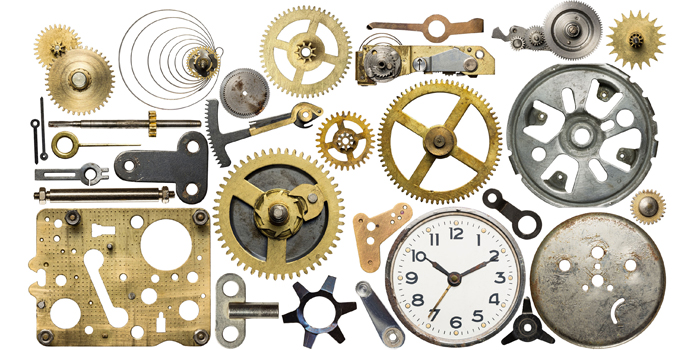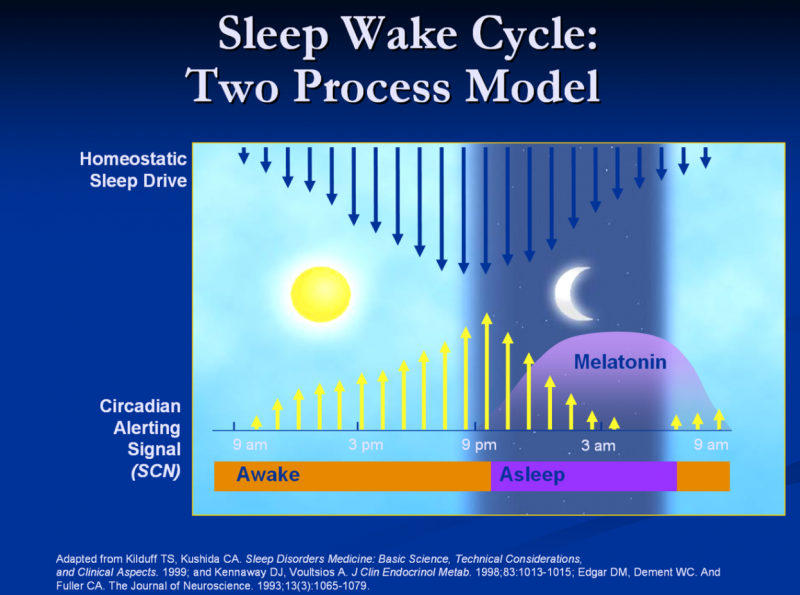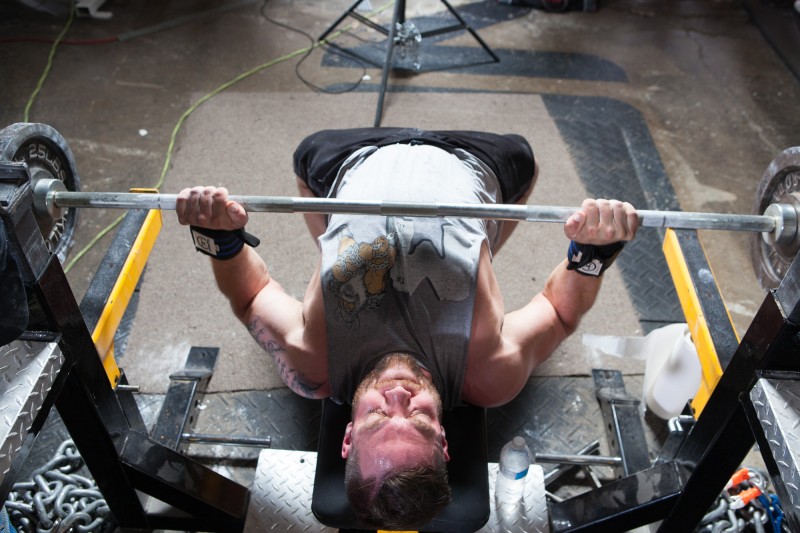
Most people have heard about the importance of sleep for general health, as plenty of articles have been written on the subject (even in mainstream magazines and websites). Less of the general population, however, understands the role of chronobiology and the circadian rhythm in not only sleep but also in mental health and sports performance. There are numerous ways that these important processes are often disrupted by our actions and environment, but thankfully there are also concrete ways for us to fix some of these disruptions.
RECENT: Peak Mental Performance Podcast — How to Use Visualization
Before we get into these processes, however, I want to say upfront that this is an incredibly complex and multi-faceted topic that spans far beyond the scope of one article. I’m going to do my best to give a quick-and-dirty explanation of the mechanisms and then dive right into the practical application of how to improve performance (which is what you, as a reader of elitefts, are after). If you’re interested in diving deeper into the research of chronobiology, polish off your reading glasses, because there’s a lot out there.
What is the circadian rhythm?
Circadian rhythms are physical, mental, and behavioral changes that are aligned in a roughly 24-hour biological cycle. These rhythms are found in most living organisms, and the study of their processes is called chronobiology1. There are many factors affecting circadian rhythms, from genetic predisposition, to daily lifestyle habits. These mechanisms respond primarily to light and darkness, regardless of environment – which, in our modern world of artificial lights, late-night work shifts, and hectic lifestyles, means that issues in this system are extremely common.
Circadian rhythms collectively make a large network of biological clocks in the body, which are primarily controlled by a master clock in an area of the brain called the hypothalamus1. While there is an entire world of research dedicated to studying this topic, for our purposes we will only focus on the basics of circadian rhythm and ways to influence it using our daily regimen.
How does our circadian rhythm affect us?
Our circadian rhythms affect many different body systems, but some of the larger effects are on what’s called the sleep-wake cycle. In a largely watered down definition, the sleep-wake cycle combines the circadian rhythm (which is affected by external variables like light, nutrition, etc.), and what is called homeostatic sleep drive2. This homeostatic sleep drive operates based on how much sleep your body needs to operate (the more you build a “deficit” during the day, the more quality sleep the homeostatic drive “demands” for night time).
For our purposes, our (or our athlete’s) training, lifestyle, and daily behavior during time awake affect the needs of the homeostatic sleep drive. Then external variables like light (both natural and artificial), nutrition timing, and supplement intake (among a host of other smaller variables) can affect the circadian rhythm. When the homeostatic sleep drive and circadian rhythm work together, the body operates optimally. However, when these two mechanisms are thrown off, numerous health dysfunctions can occur.
When someone’s sleep-wake cycle starts to mismatch the 24-hour cycle that person lives in, psychiatric disorders such as bipolar disorder, seasonal affective disorder, and other depressive states can occur3. In addition to mental health concerns, hormonal secretion changes can affect components of health, ranging from fat gain and energy balance disruption4 to overall athletic performance5. This can often be caused by jet lag, when an athlete travels to a different location and competes at a time outside of their normal routine or environment. Even when the time zone doesn’t change, social jet lag can occur when there are schedule changes, such as an athlete going to bed at 11 PM during the week, but during the weekend staying up and partying until 3 AM.
MORE: Health Risk or Wonder Drug: The Lowdown on Kratom
In addition to these specific dysfunctions, sleep quality as a whole is affected, which can cause a litany of problems for the athlete. For more on the general impact of sleep on mental health and performance, I suggest listening to my podcast interview with sleep researcher Jesse Cook (link provided at the end of this article).
As I’m sure you can imagine, psychiatric dysfunction, sleep disruption (which affects training recovery), hormonal fluctuations, and metabolic dysfunction is a terrible combination for an athlete. Getting stuck in the routine of a disrupted sleep-wake cycle can turn a top-tier athlete into a complete mess.
So how do we fix a disrupted sleep-wake cycle?
The reality of our daily lives is that there will always be some irregularity in our sleep-wake cycles, and that’s okay. Just like with training, it’s not about being perfect; it’s about setting things up as optimally as you can. Thankfully, some fairly simple and cost-effective habits can make a dramatic difference in correcting sleep-cycle dysfunction. Below are several habits I’ve been including in my own routine, and that have research supporting their benefits.
Tip 1: Find out what your current circadian rhythm is.
There are several research-validated self-assessments that you can complete fairly quickly and will provide you (or your athletes) with some great information, including:
- What your approximate chronotype (circadian rhythm type) is
- What time may be ideal for optimal exercise performance based on chronotype
- What time would be best to get into bed in order to maximize melatonin production
- What time would be best to implement techniques such as using a circadian lamp (which we will discuss shortly)
At the end of this article, I provide a link to a self-assessment that helped me a lot in selecting some of these routine changes.
Tip 2: When possible, align training and physical activity with your circadian rhythm.
The exact optimal time for exercise varies based on a number of variables, including the circadian rhythm and sleep-wake cycle, which we discussed. There are actually smaller circadian clocks inside the muscle fibers themselves that can alter cell function depending on what time of day training occurs7. Not only does your circadian rhythm affect training performance, but exercising or not exercising can even alter your sleep-wake cycle8.
Since these variables will differ between athletes, and you don’t always have a choice when you or your athletes can train and compete, it’s important not to get too caught up in training times being perfect. A practical approach is to determine your current chronotype (stated in tip one), evaluate your ideal sleep-wake cycle (based on work, school, responsibilities), and look at how training times affect your own sleep so you can make the proper modifications.
Some people may be able to train later in the day without a negative effect, but many find that the combination of biochemical processes and sympathetic activation of the nervous system that occurs during training can throw off healthy circadian rhythms and their alignment with the sleep-wake cycle7. Simply put, if you’re having trouble falling asleep or staying asleep, try moving your training earlier in the day.
Tip 3: Reduce blue light exposure in the evening.
As we mentioned before, light exposure plays a role in altering the circadian rhythm in relation to the sleep-wake cycle. Without modern lights and technology, we would regulate our circadian rhythm based on the sun rising and setting, which would make healthy cycles easier to achieve on a regular basis. But with artificial lighting, TVs, computers, and other modern technologies, we regularly continue our exposure to light well after the sun has set. This can shift our circadian rhythm (as we discussed before), and throw off the sleep-wake cycle.
All light isn’t created equal, however, and certain wavelengths of light affect the circadian rhythm more than others. Blue light wavelengths (common in electronics and energy-efficient lighting) are shown to decrease melatonin production (needed for sleep) by more than twice as much as other warmer light wavelengths and are shown to throw off the circadian rhythm dramatically9.
So how do we help reduce these harmful effects in a modern world? Here are a few ways to reduce blue-light exposure in the evenings and prevent harmful dysfunction of your sleep-wake cycles:
- Utilize blackout curtains in your bedroom. Making sure no external lights (street lights, etc.) are shining into your bedroom at night will help your body know it’s time for sleep at the right time.
- Shut off electronics and lights prior to your ideal bedtime. See chronotyping assessment at the end of this article.
- If you do need to use your cell phone, make sure it is set to only utilize softer light wavelengths. Apple products like iPhone include a built-in “night shift” feature that cuts out blue light. Make sure this setting is turned on and adjusted to your ideal sleep-wake cycle. Other products often offer a downloadable app to perform this same function. Just make sure it is a reputable app, as some only dim the light and don’t actually switch light wavelengths.
Tip 4: Utilize a circadian lamp in the mornings to help kick-start a healthy circadian rhythm based on your schedule.
This is a fairly inexpensive and effective device for helping with a healthy circadian rhythm (and, in turn, a healthy sleep-wake cycle). I recently purchased a circadian lamp (I’ll post the link at the end of this article) for about $45. The lamp allows me to set a timer so that it slowly comes on about half an hour before I need to be up, and mimics a rising sun to help with wakening. This type of light therapy in the mornings is shown in research to:10
- Increase ease of wakening
- Increase alertness in the morning
- Provide an anti-depressant effect
I was fairly skeptical how much this would help, but even after using the light for just a week (and utilizing the blue light reduction methods listed in tip three), I’ve been waking up without a standard alarm clock for the first time in my life. In addition to wakening effects, I’ve also been feeling much more energetic in the morning (I’m normally extremely groggy and grumpy in the mornings). For the fairly inexpensive cost, I think a quality light is definitely worth the minimal financial investment for its positive effects.
Tip 5: Make sure to address additional sleep problems outside the scope of this article.
Sleep quality is incredibly multi-dimensional, and while these methods for correcting circadian rhythm dysfunction are effective, outside health issues may be affecting the sleep-wake cycle as well. Some additional health concerns that can affect sleep quality (some of which we discuss in my podcast listed below) are:
Sleep Apnea
This is common, especially in heavier athletes, and can disrupt the sleep-wake cycle dramatically (and also be dangerous). A sleep study with a physician is typically needed to diagnose sleep apnea.
Anxiety
This is a very multi-dimensional issue as well, and many things can cause (and assist with) anxiety at bedtime. Personally, I’ve found diaphragmatic breathing drills and the supplement kratom (link to more information at the end of this article) to be extremely helpful with anxiety. A number of medications also can be used for this, but each comes with their own side effects and considerations. I plan on writing more on this topic in the future.
Nutrition Habits
I debated including this subject in the main tips of this article, but since nutrition is such a complex topic, I decided to save it for another time. Optimal nutritional habits are very individualized and will vary between each athlete. There is, however, evidence that abnormal eating schedules can affect the circadian rhythm11. Considering how nutrition timing plays a role in the sleep-wake cycle, this is another important component of sleep health and performance.
Variables like caffeine (and other stimulants) intake also play a role in this, and consideration of what you’re consuming in the latter part of the day is important as well.
There are other components of sleep that we will save for another article, but this should give you several very practical tools for improving your sleep quality and performance. Remember that how you manage recovery and restoration is just as crucial as your training program.
Helpful Resources
- “Sleep Quality, Wearable Sleep Tracking Technology, and Tips for Athletes” – Episode 13 of the Peak Mental Performance Podcast
- Chronotype Self-Assessment (for determining your circadian rhythm)
- Circadian Lamp
- Kratom Information
References
- Circadian Rhythms Fact Sheet. (n.d.). Retrieved August 24, 2017, from
- Sleep-Wake Cycles and Shift Work. (n.d.). Retrieved August 24, 2017, from https://woolcock.org.au/circadian-rhythm-sleep-disorders/
- Dagan, Y., & Borodkin, K. (2005, December). Behavioral and psychiatric consequences of sleep-wake schedule disorders. Retrieved August 24, 2017, from https://www.ncbi.nlm.nih.gov/pmc/articles/PMC3181741/
- Maury, E., K.M. Ramsey, and J. Bass, Circadian rhythms and metabolic syndrome. Circulation research, 2010. 106(3): p. 447-462.
- Sleep, circadian rhythms, and athletic performance Thun, Eirunn et al. Sleep Medicine Reviews, Volume 23, 1 - 9
- Photo from: http://misc.medscape.com/pi/iphone/medscapeapp/html/A1187829-business.html
- Clara Bien Peek, Daniel C. Levine, Jonathan Cedernaes, Akihiko Taguchi, Yumiko Kobayashi, Stacy J. Tsai, Nicolle A. Bonar, Maureen R. McNulty, Kathryn Moynihan Ramsey, Joseph Bass, Circadian Clock Interaction with HIF1α Mediates Oxygenic Metabolism and Anaerobic Glycolysis in Skeletal Muscle, Cell Metabolism, Volume 25, Issue 1, 2017, Pages 86-92, ISSN 1550-4131, http://dx.doi.org/10.1016/j.cmet.2016.09.010. (http://www.sciencedirect.com/science/article/pii/S1550413116304909)
- https://well.blogs.nytimes.com/2015/05/20/lack-of-exercise-can-disrupt-the-bodys-rhythms/?partner=rss&emc=rss&_r=1
- https://www.health.harvard.edu/staying-healthy/blue-light-has-a-dark-side
- https://www.cet.org/therapy/dawn-dusk-simulation-therapy/
- https://www.ncbi.nlm.nih.gov/pmc/articles/PMC2657421/
Header image courtesy of donatas1205 © 123RF.com













http://www.webmd.com/sleep-disorders/features/what-is-segmented-sleep#1
https://www.polyphasicsociety.com/polyphasic-sleep/overviews/segmented-sleep/